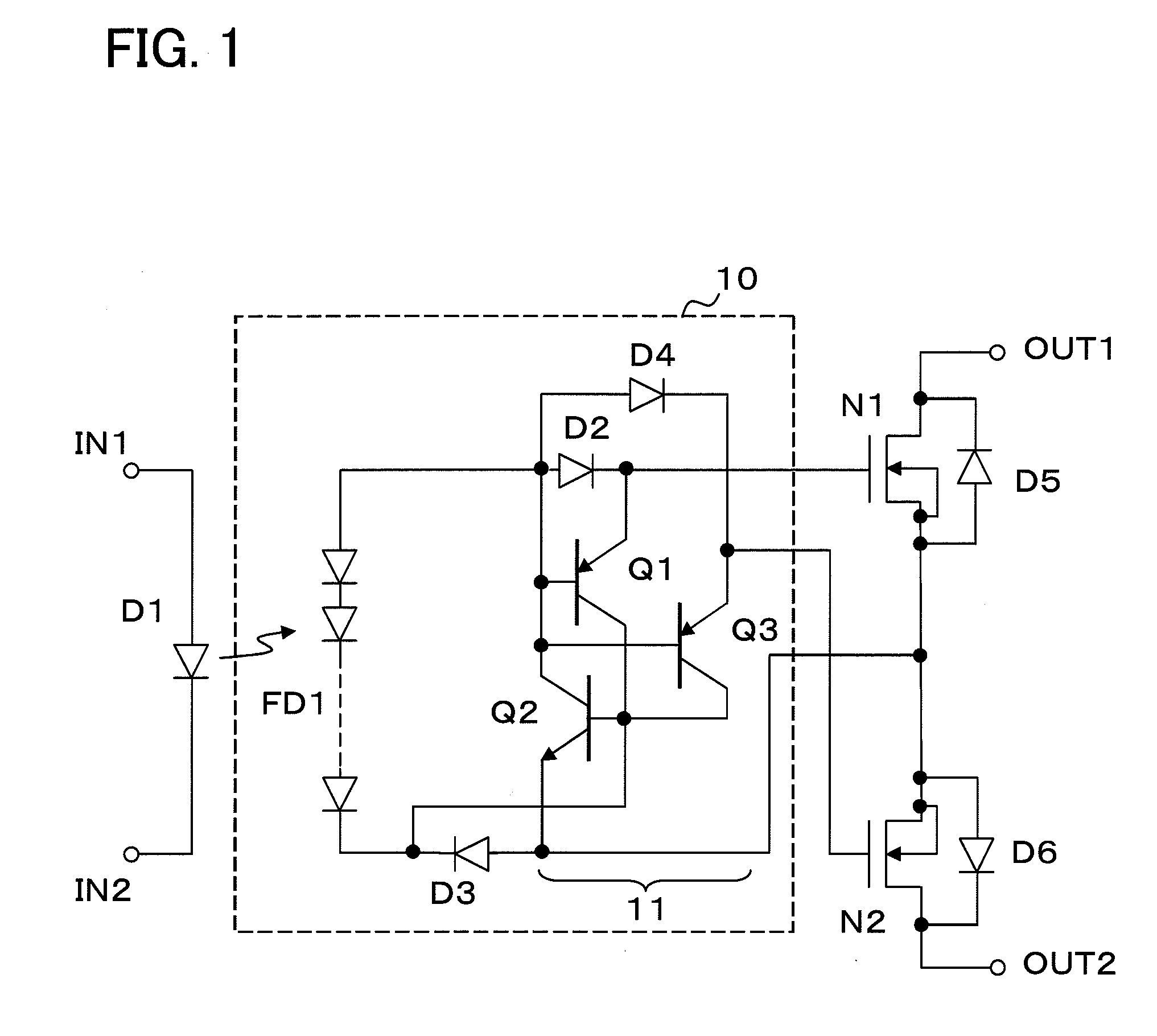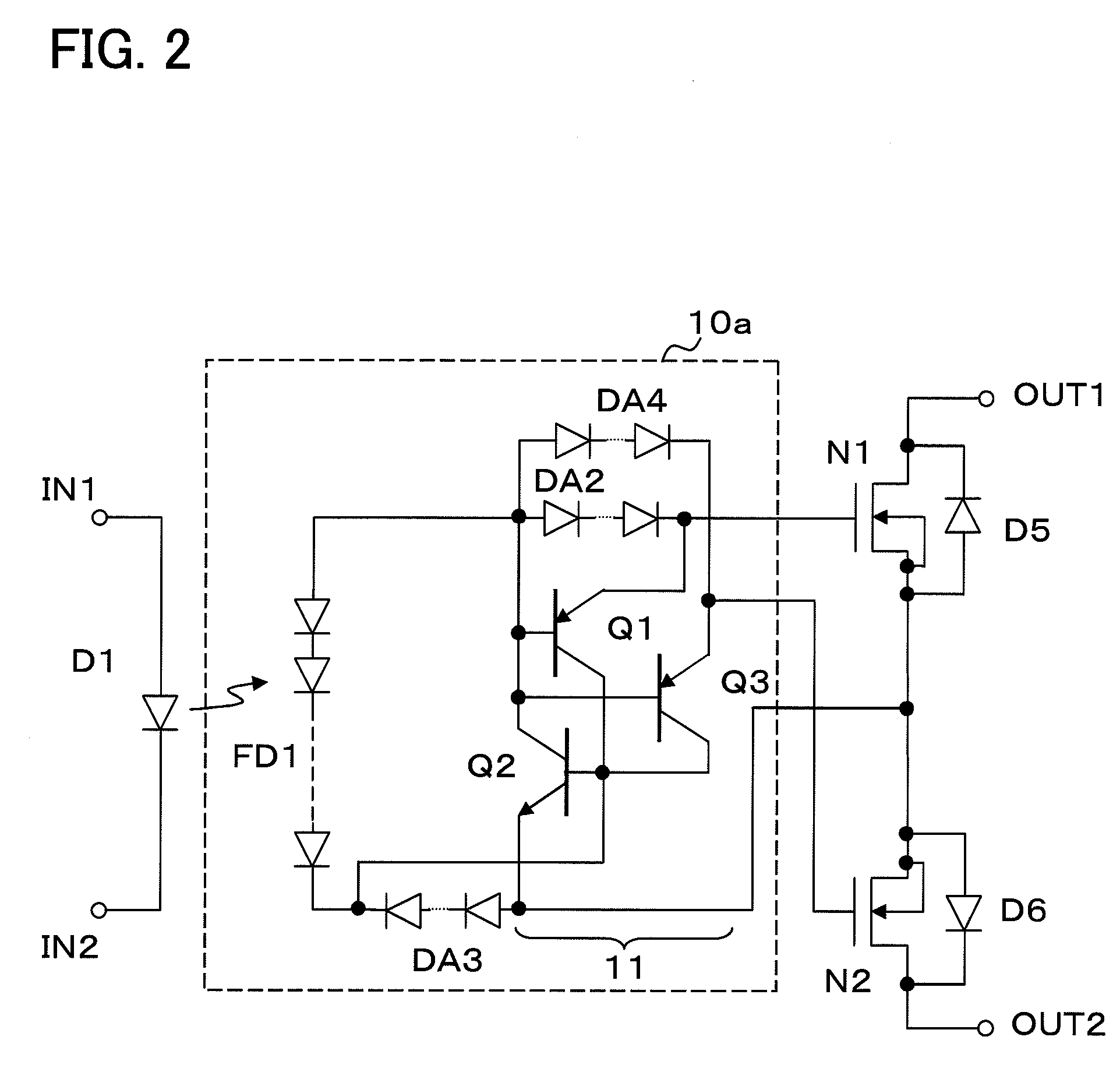Optical semiconductor relay device
- Summary
- Abstract
- Description
- Claims
- Application Information
AI Technical Summary
Benefits of technology
Problems solved by technology
Method used
Image
Examples
example 1
[0044]FIG. 1 is a circuit diagram of an optical semiconductor relay device relating to a first example of the present invention. In FIG. 1, the optical semiconductor relay device comprises a pair of input terminals IN1 and IN2, a pair of output terminals OUT1 and OUT2, MOSFETs N1 and N2 connected between the output terminals, and a drive circuit 10 connected between the input terminals IN1 and IN2 and the MOSFETs N1 and N2. An LED D1 is connected between the input terminals IN1 and IN2. Source electrodes of the MOSFETs N1 and N2 are electrically connected to each other, and drains are connected to the output terminals OUT1 and OUT2, respectively. Further, diodes D5 and D6 denote parasitic diodes of the MOSFETs N1 and N2 respectively.
[0045]The drive circuit 10 is configured so that gate electrodes of the MOSFETs N1 and N2 are not short-circuited to each other and a single control signal turns on / off the MOSFETs N1 and N2. Further, the drive circuit 10 includes a photodiode array FD1 ...
example 2
[0054]FIG. 2 is a circuit diagram of an optical semiconductor relay device according to a second example of the present invention. In FIG. 2, the symbols same as the ones in FIG. 1 indicate the same things, thus the explanations of them will be omitted. In the optical semiconductor relay device shown in FIG. 2, the diodes D2 to D4 are replaced by serially-connected diode arrays DA2 to DA4 respectively.
[0055]In the optical semiconductor relay device configured as above, since the diode arrays DA2 to DA4, in which a plurality of diodes are connected in series, are used as the diodes connected between the base and emitter electrodes of each transistor in the thyristors as the discharge circuits, the OFF capacitance (CPVD) of the drive circuit constituted by the photodiode array and the discharge circuit is reduced more than in the first example. As a result, it is possible to reduce the OFF capacitance (Cout2) between the output terminals even more.
[0056]FIG. 6 shows a variant of the c...
PUM
 Login to View More
Login to View More Abstract
Description
Claims
Application Information
 Login to View More
Login to View More - R&D
- Intellectual Property
- Life Sciences
- Materials
- Tech Scout
- Unparalleled Data Quality
- Higher Quality Content
- 60% Fewer Hallucinations
Browse by: Latest US Patents, China's latest patents, Technical Efficacy Thesaurus, Application Domain, Technology Topic, Popular Technical Reports.
© 2025 PatSnap. All rights reserved.Legal|Privacy policy|Modern Slavery Act Transparency Statement|Sitemap|About US| Contact US: help@patsnap.com



